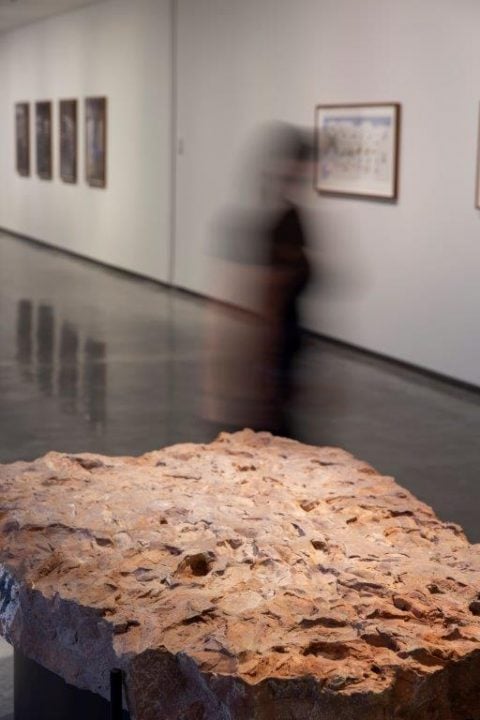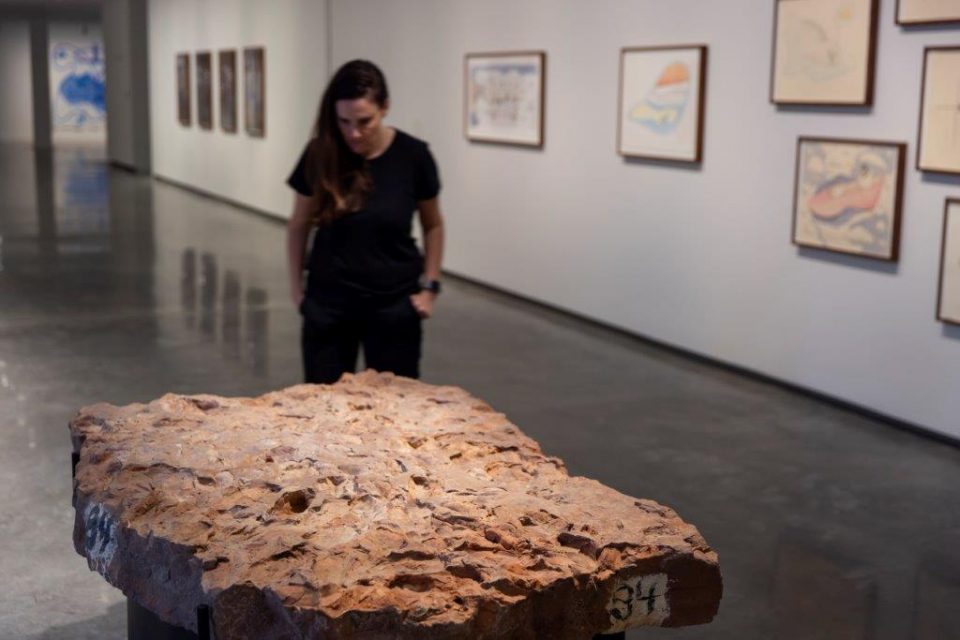Fossil.
Courtesy of the Australian Museum. Presentation at the 23rd Biennale of Sydney was made possible with generous assistance from the Australian Museum.
This fish fossil is included as a participant in the 23rd Biennale of Sydney along with several other objects and non-human beings. The Curatorium leading the Biennale describes its inclusion as ‘a way of entangling multiple voices, listening to other modes of communication, and asking unlikely questions.’
Just after their death, around 360 million years ago, the fish in this fossil were covered in a thin layer of mud and silt that preserved their scales and skeletons and gradually transformed into rock. The fossil was found on Wiradjuri Country near the town of Canowindra in central west New South Wales and is the remains of an ancient Devonian fish community. The Devonian Period spanned between approximately 419 and 358 million years ago and is sometimes known as the ‘Age of Fishes’ because of the abundant fish that swam in the seas at this time.
Embedded in the extinct and rare fish found in the Canowindra fossils are some of the systems that make us human – the beginnings of breathing, of arms, legs, and jaws. One of the rarest fossils is of a kind of lungfish named Soederberghia simpsoni. This ancient creature with a reptile-like head is related to the Australian lungfish, our closest living fish relative that still survives in south-eastern Queensland and has barely changed in 100 million years.

